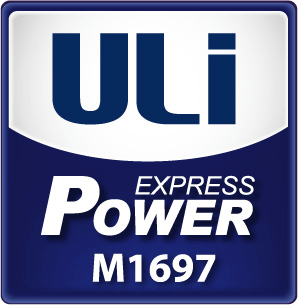FIRST LOOK: ULi M1697 for Athlon 64/x2
by Wesley Fink on December 13, 2005 12:05 AM EST- Posted in
- CPUs
As VIA and SiS seem to be declining in the chipset arena, ULi continues an aggressive push to capture a larger share of the chipset market. This is particularly true in the AMD arena, where ULi has produced the innovative AGP/PCIe M1695/M1567 chipset, and where ULi recently introduced the M1575 South Bridge for the ATI RD480 Crossfire chipset.
ULi also produces a single - chip Socket 754/939 chipset called the M1689, which is used by Gigabyte and other board makers for entry level AMD boards. However, the M1689 looks fairly basic in today's feature wars, which is exactly why ULi is introducing the M1697 single-chip for AMD Socket 939, 754, and 940.
Please keep in mind that this is not a board review. We are evaluating a ULi M1697 Reference board, and Reference boards are designed for qualification - not production. The Reference board will give you a very good idea of the features and capabilities of the M1697 chipset, but it is not useful to look too closely at board layout or overclocking controls, unless they are exemplary as in recent ATI Reference designs. In the case of the M1697, the Reference board is clearly designed for qualification, and feature demonstration. It is not a board that will be copied in production.
This is particularly true in the overclocking arena. While the M1697 has basic voltage adjustments and an excellent range of memory adjustments, there are no memory voltage adjustments at all on this board revision. As a result, we decided that it was not reasonable to do any overclocking tests on this Reference board, since we could not use our standard test methods to evaluate OC capabilities. This was an easy decision, since Abit and other manufacturers have assured us that we will be receiving ULi M1697-based motherboards for review in the very near future.
ULi also produces a single - chip Socket 754/939 chipset called the M1689, which is used by Gigabyte and other board makers for entry level AMD boards. However, the M1689 looks fairly basic in today's feature wars, which is exactly why ULi is introducing the M1697 single-chip for AMD Socket 939, 754, and 940.

Please keep in mind that this is not a board review. We are evaluating a ULi M1697 Reference board, and Reference boards are designed for qualification - not production. The Reference board will give you a very good idea of the features and capabilities of the M1697 chipset, but it is not useful to look too closely at board layout or overclocking controls, unless they are exemplary as in recent ATI Reference designs. In the case of the M1697, the Reference board is clearly designed for qualification, and feature demonstration. It is not a board that will be copied in production.
This is particularly true in the overclocking arena. While the M1697 has basic voltage adjustments and an excellent range of memory adjustments, there are no memory voltage adjustments at all on this board revision. As a result, we decided that it was not reasonable to do any overclocking tests on this Reference board, since we could not use our standard test methods to evaluate OC capabilities. This was an easy decision, since Abit and other manufacturers have assured us that we will be receiving ULi M1697-based motherboards for review in the very near future.










51 Comments
View All Comments
oneils - Tuesday, December 13, 2005 - link
Are you sure? The cards i've seen are all pci 2.1.